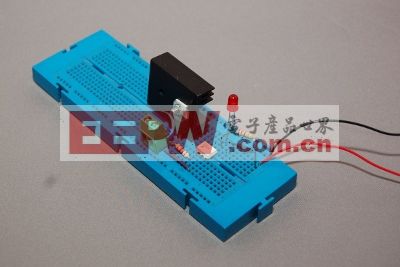There are several methods to build a circuit, depending on the tools you have and how much time you have available. When designing a new circuit, especially for projects like FIG, the schematic is usually finalized before the actual layout and soldering process begins. The first version of the circuit is typically built on a breadboard to test its functionality. This helps identify issues early in the development phase and gives you enough time to make adjustments without having to modify the already soldered components.
The initial prototype is often implemented on a board that can be kept for a longer period, such as a printed circuit board (PCB) or a universal board. These provide a more stable platform for testing and refining the design before moving to a final production version.
Several Ways to Build a Circuit: Wrap/Solder Pin
One method involves using nails or pins mounted on a board. By connecting wires between these pins, you can create a simple circuit. I used this approach when I was learning about electronics in school. For more complex systems, you might need specialized boards and routing tools to manage the connections effectively.
This technique is great for basic designs and educational purposes. It allows you to easily replace components with actual parts from the schematic during analysis. However, if your design is highly complex or based on an integrated circuit, a breadboard may be more suitable for quick prototyping and testing.
Another Way to Build a Circuit: Breadboard – No Soldering Required

Breadboards, also known as plug-in boards, are ideal for temporary circuit testing. They consist of a plastic base with rows of interconnected holes. Components inserted into the same row are electrically connected, making it easy to assemble and test circuits without soldering.
Breadboards are user-friendly and do not damage components. They allow for easy insertion and removal of integrated circuits and other parts. They are often used with potentiometer mounts and similar accessories. To connect to a breadboard, you’ll need solid-core wires—especially if you’re used to flexible multi-strand cables. It’s recommended to use pre-cut wires for multiple projects, even if they cost a bit more. This saves time by eliminating the need to cut wires yourself.
A 25-minute e-training video demonstrates how to build a buzzer circuit on a breadboard, making it a great resource for beginners.
If you're interested in DIY projects, check out the mechanical keyboard community for tips and guides on building your own custom keyboard.
Circuit
Differential Mode Inductors,I type Inductors,Common Mode Inductors,Differential Mode Choke Inductor
Xuzhou Jiuli Electronics Co., Ltd , https://www.xzjiulielectronic.com